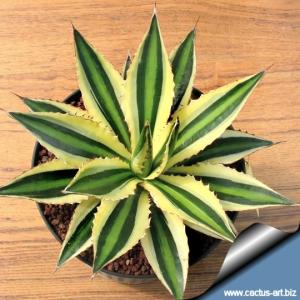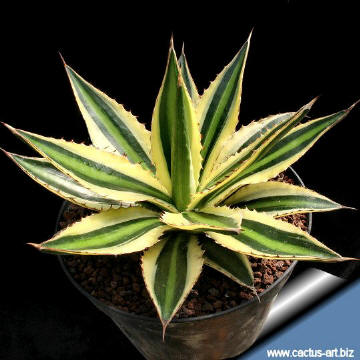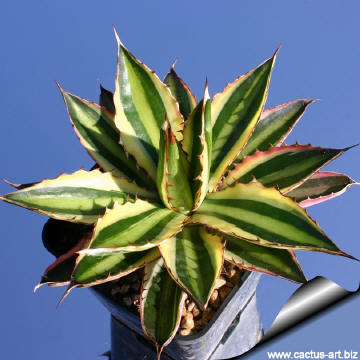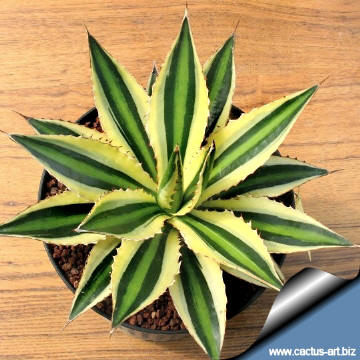-
x
Description
Solitary or slowly clumping succulent rosette, up to 40 cm tall, 60 cm in diameter. Leaves are characteristically variegated with four distinct colours. Large plants are extremely ornamental. Family: Agavaceae Scientific Name: Agave lophantha Schiede ex Knuth
| |
| Description: Solitary or slowly clumping succulent rosette, up to 40 cm tall, 60 cm in diameter. Leaves are characteristically variegated with four distinct colours. | |
| Cultivation: Agave lophantha "QUADRICOLOR" is a relatively easy-to-grow species. Suited for light shade to full sun, but better with some shade in summer. Needs a very well-drained soil. It grows fairly fast in summer if provided with copious water, but allow to dry thoroughly before watering again (the more water and fertilizer this plant gets, the faster it will grow). During the winter months, one should only water enough to keep the leaves from shrivelling. | |
| A. 'Goshikibandai' is a small-sized species that does great in all kinds of containers. | |






